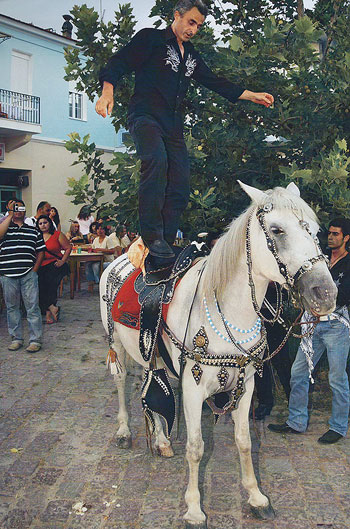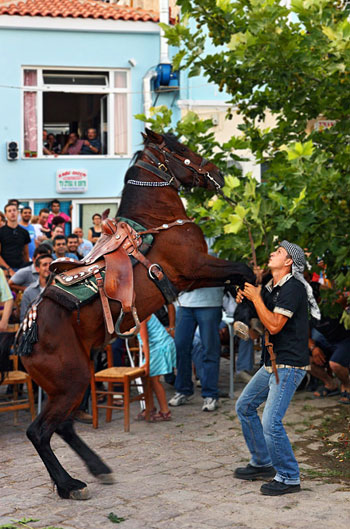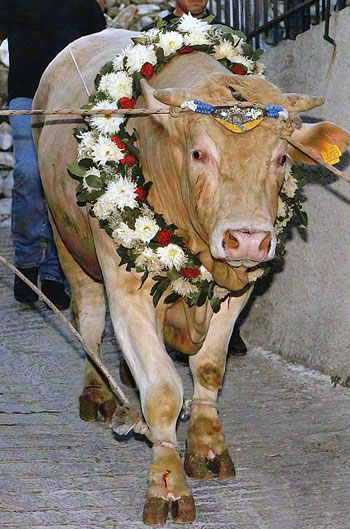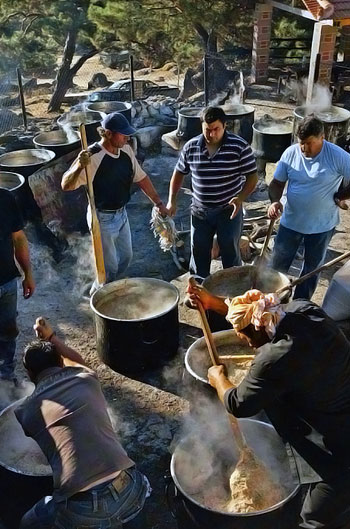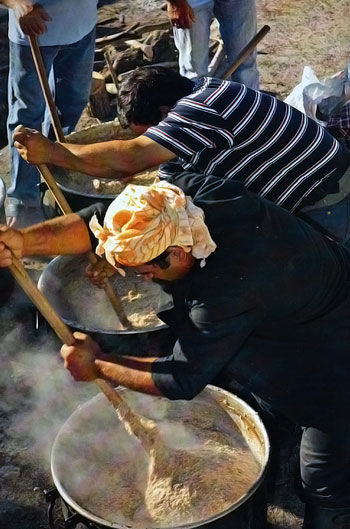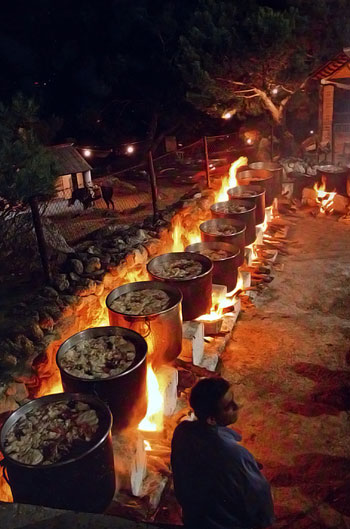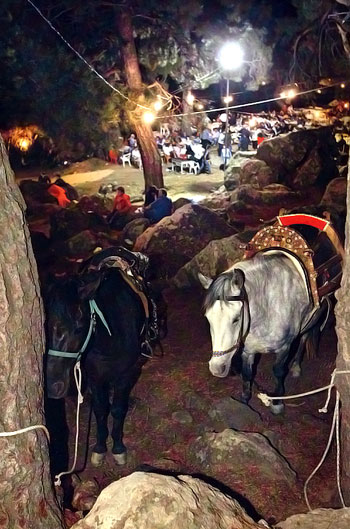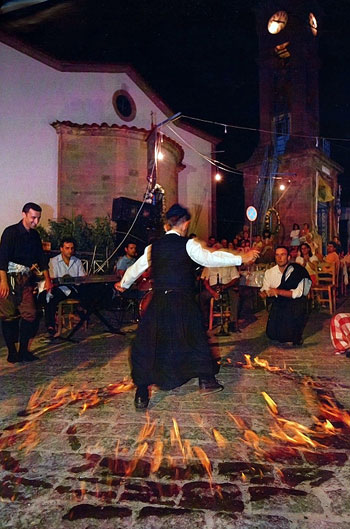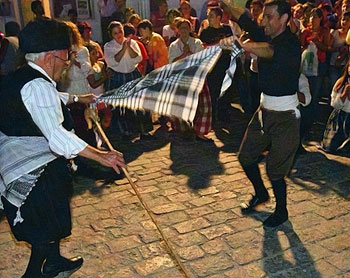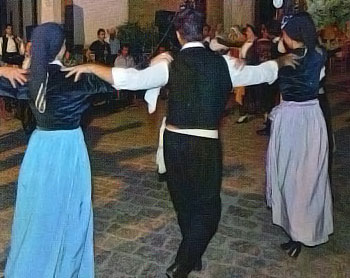Lesvos Festivals - The Bull Sacrifice
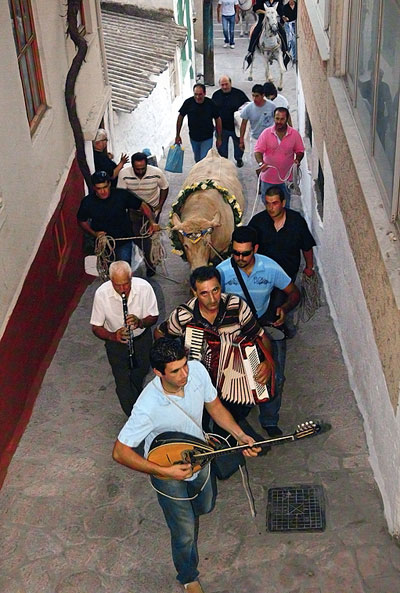
A 3 day village feast takes place in Lesvos island from 11 until 13 July where the major custom is the bull sacrifice.
One could say that it seems as if a theatrical piece is performed during this feast however, in fact, it is something further. The bull sacrifice is an original folk custom deeply associated with the habitantsís of Lesvos island life, as they are looking forward to celebrating it each summer.
The feast begins during the evening of the first day when people adorn the bull with flowers and pass it round until they arrive at the central square of Pigi village in Lesvos, where they start a big revel.
What follows on the next morning, is a parade and a horse beauty contest. Then, people of Lesvos island walk towards Tsamliki, a pine forest on Tavros mountain. Both horses and their riders are climbing a cobblestone pavement in order to reach Saintís Haralambos church and be blessed by the priest.
Another revel takes place in the middle of the forest afterwards, and the drama prominence comes at midnight when the bull is sacrificed.
While some people keep on reveling all night long and some of them sleep on druggets, there are a few who stay awake to cook the bull. They boil it mixed with lamp in cauldrons all night long and they add wheat, in the morning when the cooks beat the cauldrons with some big battledores until the mix turns to a fibrous form. The priest arrives at 9 in the morning in order to bless the food, called "kiskets or kisketsi" , which is then served to the people.
The next activity of that feast consists of horse races on a table-land closely to Tavros mountain and the last one, on Sunday evening, includes the final revel in the central square of Pigi village.
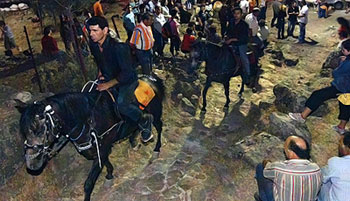
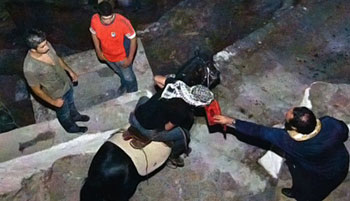
The sacred bull: fertility ñ lack - health
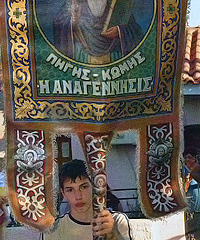
The bull costs almost 3.000 Ä and is bought a few days in advance. Music plays while the animal is being adorned. In the past, only virgins where allowed to adorn the bull and men had to cross its legs. During a procession which heads from west to east of Pigi village of Lesvos island, women who follow it, offer the bull pieces from their daughtersí trousseau, because it is believed that this will help the daughters to get married to a fertile husband. Both young and old men touch its horns as it is believed to give them some of the bullís vehemence. Agricultures on the other hand, offer it oil, in order to ensure a rich harvest.
The bull is headed to Agios Haralambos church where the priest blesses it, on the evening of the second day. The habitants of Lesvos island arrive there too, through a route full of pines and olive groves while musicians accompany them. An auction is carried out, after the blessing of the bull, in order to proclaim the immolator. (Nowadays it is just an act of symbolism, as the bull is being killed with an abattoir gun, in order not to suffer at all). People draw a cross on their forehead with its hot blood and they also cross their cows in order to help them be pregnant.
The bull weighs almost 400 kg and should be a healthy animal. In the past, the choice of the bull depended on its genre, colour and age and it had to be immaculate.
The horsesí dance
During the second day of the feast, the horses are decorated in the prettiest way and children ride them while their parents hold the reins. Sometimes, a mare shows up before the horsesí beauty contest, causing an agitation among them!
When the sound of that specific mournful and at the same time doughty rhythm, known as "Ati Havasi", is heard, the "horsesí dance" starts. The winner is the horse with the best decoration, the best shaping and the one which seems to have the best "relationship" with its rider. It means that the horse is well "educated" and obeys his rider.
